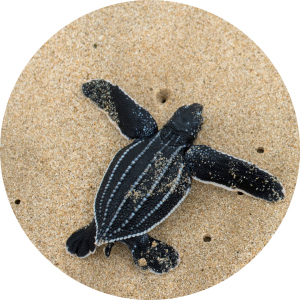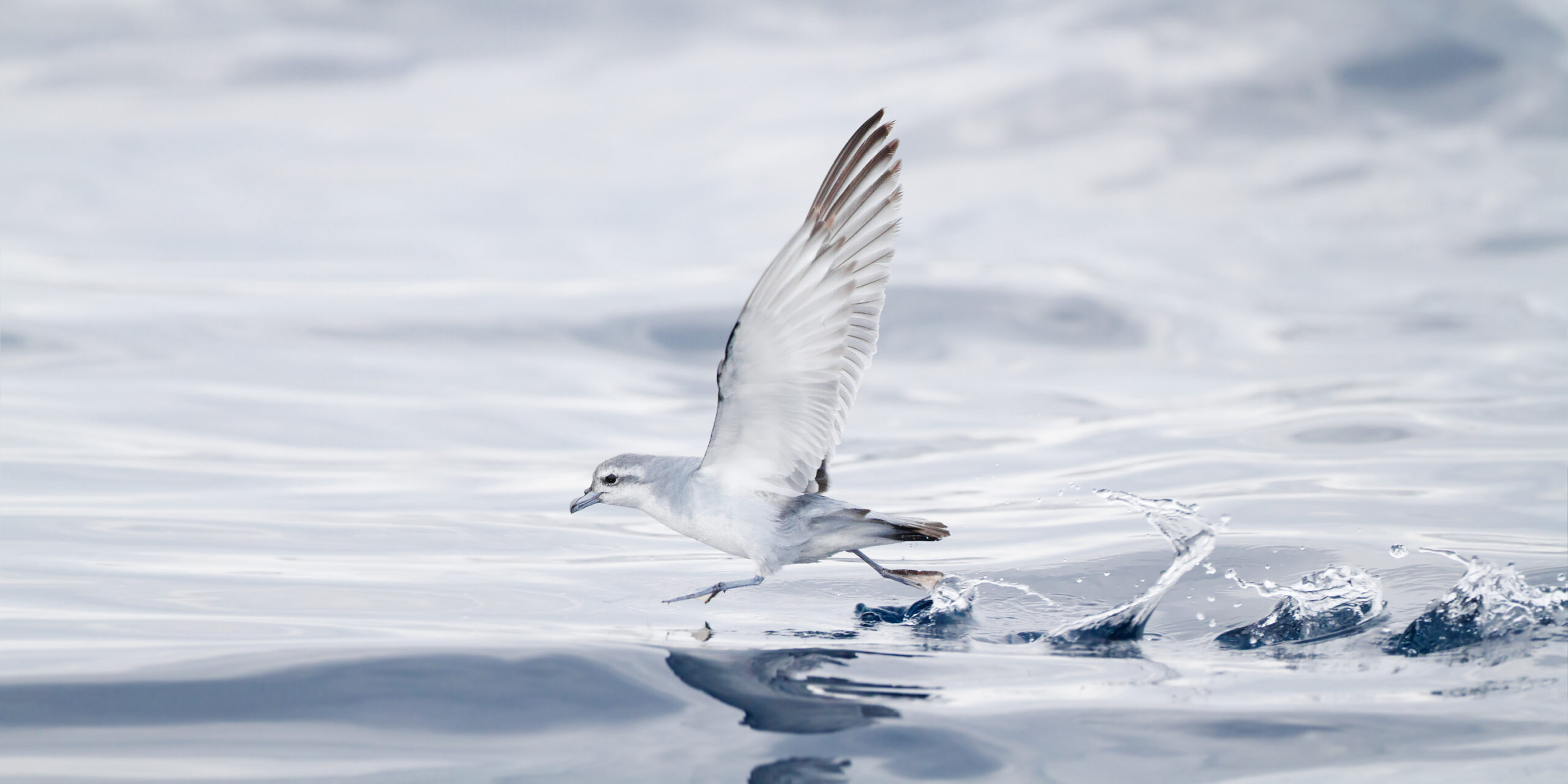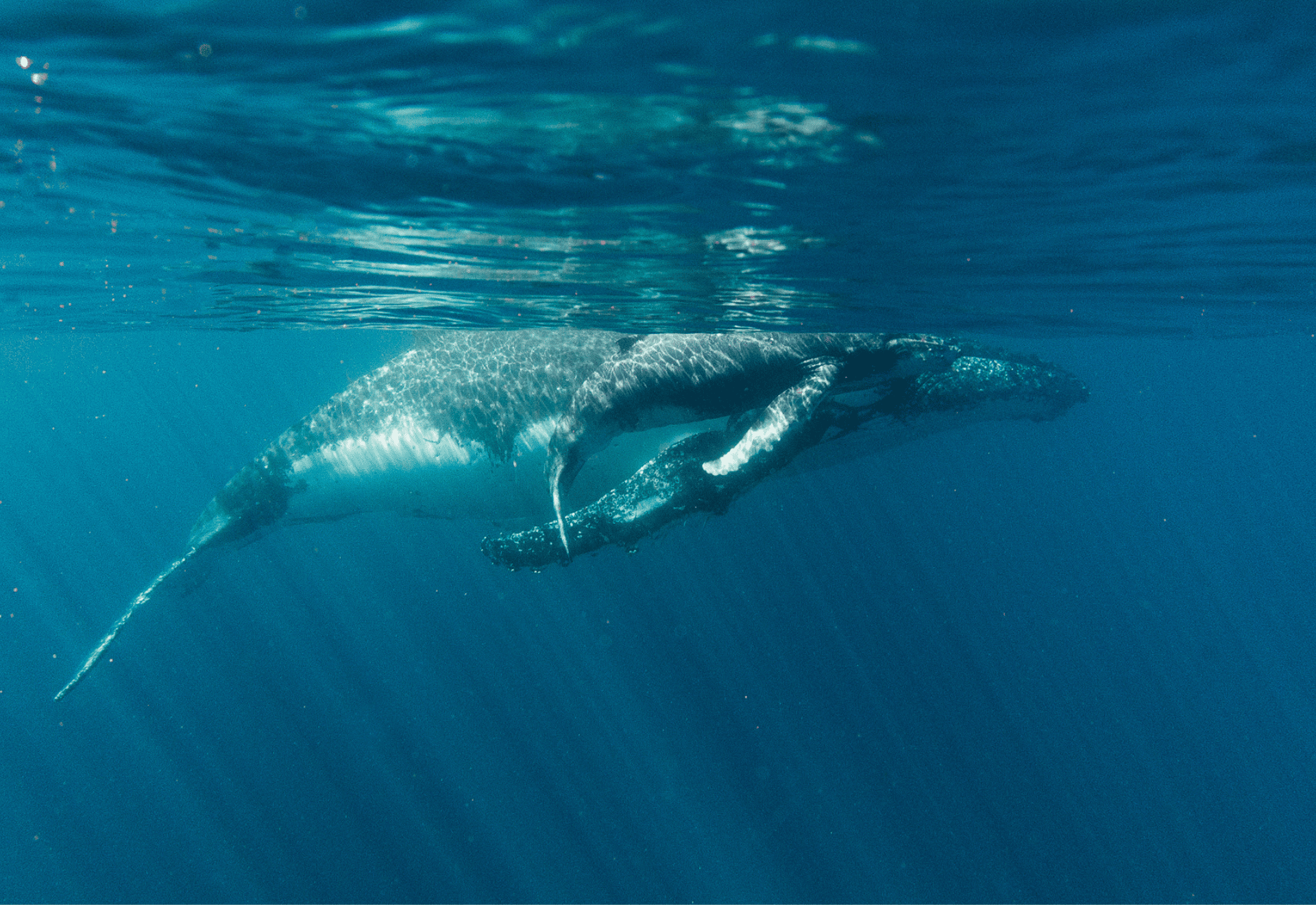
Why are migratory species protected under international agreements?
From humpback whales to black-browed Albratrosses, some 165 migratory species visit Australia’s oceans, beaches and wetlands along their migration routes. These incredible animals – many of which traverse the planet to nest, nurse and feed – are protected under international conservation agreements.
Climate threats to migratory species
Climate change threatens 147 of the 165 migratory species protected in Australian waters under international agreements, including Australia’s largest turtle – the Leatherback turtle. This includes mammals like dugongs, whales and dolphins; migratory birds; reptiles such as marine turtles; and sharks.
Climate risks to Leatherback turtles

Leatherback Turtles
(Dermochelys coriacea), Endangered.
An example of a migratory species protected in Australian waters, and at risk from climate change, is Leatherback turtles.
Leatherback turtles (Dermochelys coriacea) are the largest sea turtles in the world. They are also the heaviest non-crocodilian reptile and can grow to lengths of up to 1.8 metres and weigh 500kg.
Named for their shells, which feel like flexible leather, these extraordinary turtles travel great distances as they migrate across both the Atlantic and Pacific Oceans.
Although they migrate widely, their numbers are in serious decline over the past century.
Globally, Leatherback turtles are listed as vulnerable by the IUCN, with many subpopulations (such as in the Pacific and Southwest Atlantic) critically endangered.
Possible climate impacts are likely to exacerbate current threats to the Leatherback turtle, including as a result of increased air temperatures (above 30ºC) which are likely to affect embryo development and sea level rise, impacting nesting and foraging ground distribution.1
1 Conservation Advice, Dermochelys coriacea (effective 17 December 2008), 2.

Which protected migratory species are at risk from climate damage?
- Gull-billed Tern (Gelochelidon nilotica)
- Grey Wagtail (Motacilla cinerea)
- South Polar Skua (Catharacta maccormicki)
- Red-footed Booby (Sula sula)
- Pacific Golden Plover (Pluvialis fulva)
- Dugong (Dugong Dugong)
- Flesh-footed Shearwater, Fleshy-footed Shearwater (Ardenna carneipes)
- Common Greenshank, Greenshank (Tringa nebularia)
- Marsh Sandpiper, Little Greenshank (Tringa stagnatilis)
- Broad-billed Sandpiper (Limicola falcinellus)
- Ruff (Reeve) (Philomachus pugnax)
- Latham’s Snipe, Japanese Snipe (Gallinago hardwickii)
- Swinhoe’s Snipe (Gallinago megala)
- Sanderling (Calidris alba)
- Oriental Plover, Oriental Dotterel (Charadrius veredus)
- Caspian Plover (Charadrius asiaticus)
- Black-faced Monarch (Monarcha melanopsis)
- Narrow Sawfish, Knifetooth Sawfish (Anoxypristis cuspidata)
- Basking Shark (Cetorhinus maximus)
- Longfin Mako (Isurus paucus)
- Swinhoe’s Storm-Petrel (Hydrobates monorhis)
- Silky Shark (Carcharhinus falciformis)
- Bentfin Devilray (Mobula thurstoni)
- Shortfin Mako, Mako Shark (Isurus oxyrinchus)
- Oriental Cuckoo, Horsfield’s Cuckoo (Cuculus optatus)
- Oceanic Whitetip Shark (Carcharhinus longimanus)
- Spectacled Petrel (Procellaria conspicillata)
- Fin Whale (Balaenoptera physalus)
- Sei Whale (Balaenoptera borealis)
- Green Turtle (Chelonia mydas)
- Freshwater Sawfish, Largetooth Sawfish, River Sawfish, Leichhardt’s
- Sawfish, Northern Sawfish (Pristis pristis)
- White Shark, Great White Shark (Carcharodon carcharias)
- Whale Shark (Rhincodon typus)
- Green Sawfish, Dindagubba, Narrowsnout Sawfish (Pristis zijsron)
- Dwarf Sawfish, Queensland Sawfish (Pristis clavata)

